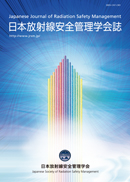Volume 7, Issue 2
Displaying 1-8 of 8 articles from this issue
- |<
- <
- 1
- >
- >|
-
2008 Volume 7 Issue 2 Pages 109-110
Published: 2008
Released on J-STAGE: March 17, 2011
Download PDF (917K) -
2008 Volume 7 Issue 2 Pages 110-112
Published: 2008
Released on J-STAGE: March 17, 2011
Download PDF (1101K) -
2008 Volume 7 Issue 2 Pages 113-115
Published: 2008
Released on J-STAGE: March 17, 2011
Download PDF (972K) -
2008 Volume 7 Issue 2 Pages 138-147
Published: 2008
Released on J-STAGE: March 17, 2011
Download PDF (3585K) -
2008 Volume 7 Issue 2 Pages 148-157
Published: 2008
Released on J-STAGE: March 17, 2011
Download PDF (4125K) -
2008 Volume 7 Issue 2 Pages 158-162
Published: 2008
Released on J-STAGE: March 17, 2011
Download PDF (2460K) -
2008 Volume 7 Issue 2 Pages 163-167
Published: 2008
Released on J-STAGE: March 17, 2011
Download PDF (2135K) -
2008 Volume 7 Issue 2 Pages 168
Published: 2008
Released on J-STAGE: March 17, 2011
Download PDF (157K)
- |<
- <
- 1
- >
- >|
